tin mới nhất
Danh mục sản phẩm
Nóng bức Các sản phẩm
-
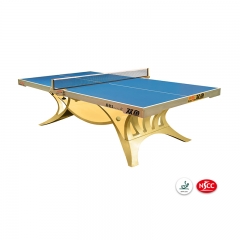
Bàn đánh bài cao cấp cho giải vô địch Volant King
Bàn bóng bàn cao cấp phù hợp với giải vô địch. Được ITTF và NSCC phê duyệt. Bạc Undercarriage + Ánh sáng Xanh
Đọc thêm -
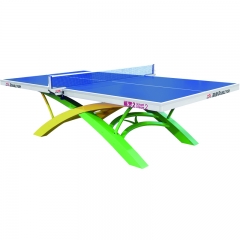
Bảng bóng bàn chính thức cho giải đấu Volant Dream 2
Bàn chơi bóng bàn chính thức Volant Dream 2 cho các cuộc thi quốc tế do Double Fish Sports thiết kế.
Đọc thêm -
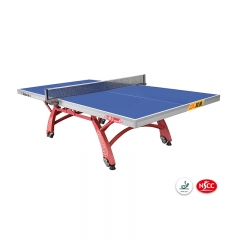
Bảng bóng bàn chính thức cho các giải thi đấu XIANGYU 328
Bàn chơi bóng bàn có thể gập lại cao cấp, thiết kế gọn nhẹ Hệ thống xếp gấp mới làm giảm tối thiểu nguy cơ thương tích trong khi cất và di chuyển bàn. ITTF chấp nhận bàn bóng bàn.
Đọc thêm -
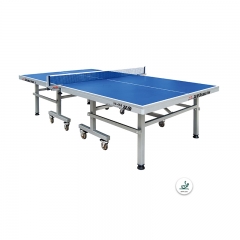
Bảng bóng bàn chính thức bền cho World Tour 99-45B
ITTF đã thông qua bảng bóng bàn chính thức bền cho giải đấu quốc tế. Độ dày của bàn ăn: 25mm TOURNAMENT CHẤT LƯỢNG - Bảng chuyên nghiệp này được thiết kế cho mức độ cạnh tranh cao nhất. HOÀN HẢO CHO GIA ĐÌNH - Cung cấp trò chơi cao cấp cho mọi lứa tuổi. Hãy đi đầu hoặc gấp lại để thực hành cá nhân. Thép khổ nặng 2 inch giúp giữ được những thách thức khó khăn nhất. Một trung tâm tuyệt vời cho phòng chơi game, phòng tập thể dục, phòng tập thể dục của bạn. EASY ASSEMBLY-Bắt đầu chơi trong vài phút với hội đơn giản. Lưới chất lượng cao được trang bị khóa kẹp dễ dàng gắn vào.
Đọc thêm -
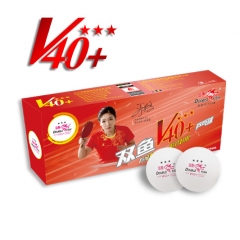
Giường đôi chất lượng tốt nhất V40 + Bóng bay Bóng rổ 3 sao
Double Fish V40 + Volant 3 sao Bóng bàn Bóng được xác nhận để ITTF mới nhất Tiêu chuẩn kỹ thuật T3.
Đọc thêm -
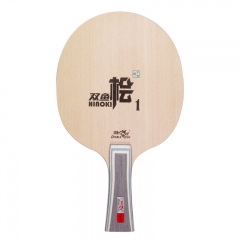
Double Fish QIJI Bàn đánh quần vợt toàn diện
Double Fish QIJI bóng bàn toàn diện, đó là bóng bàn bán chạy nhất bảng bóng bàn, & nbsp; Hoàn hảo cho các cầu thủ truyền thống allround
Đọc thêm
Truy tìm nguồn gốc | Phát triển Nhà máy Bóng bàn Quảng Châu (Phần 2)
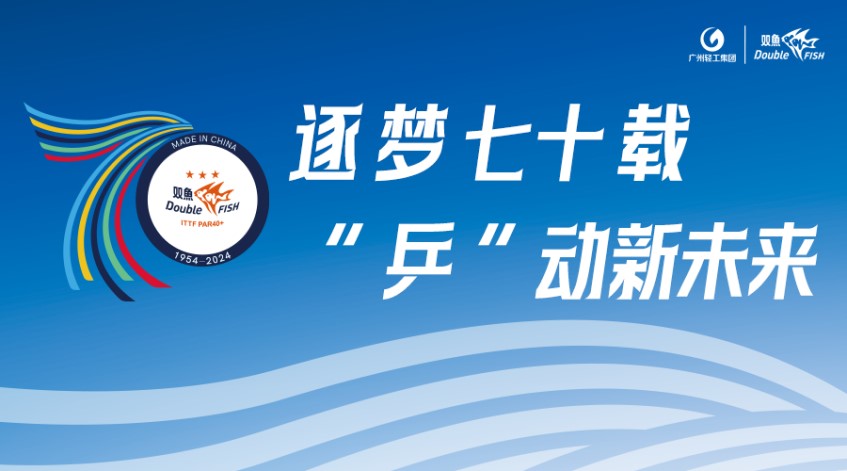
Kể từ mùa thu năm 1960, Nhà máy bóng bàn Chenggong đã dành hơn hai năm để đổi mới công nghệ, đến cuối năm 1963 về cơ bản đã cơ giới hóa các quy trình sản xuất chính của nhà máy, cải thiện sản lượng và chất lượng sản phẩm, đồng thời bắt đầu xuất khẩu sản phẩm. Năm 1963, sản lượng là 3,2 triệu, gấp hơn ba lần so với 780.000 năm 1960, trong đó 58.400 được xuất khẩu.
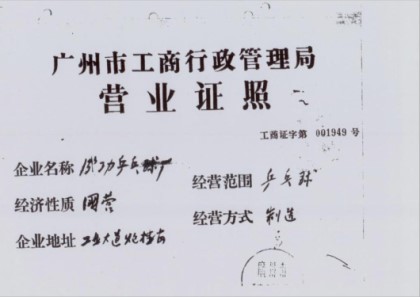
Giấy phép kinh doanh Nhà máy bóng bàn Chenggong
① Nội dung bài viết này chủ yếu dựa trên dữ liệu lịch sử của Nhà máy bóng bàn Chenggong và trang 303-304 của Tập 5 (Phần 1) của "Biên niên sử thành phố Quảng Châu".
Tuy nhiên, ngay khi hoạt động sản xuất của Nhà máy Bóng bàn Chenggong đang bùng nổ, tình trạng thiếu nguồn nước ở khu vực Đền Polo đã trở thành một vấn đề mới hạn chế sự phát triển hơn nữa. Cuối cùng, cấp trên quyết định chuyển Nhà máy bóng bàn Chenggong đến Paolougang cạnh Đại lộ Công nghiệp Hà Nam ② để giải quyết vấn đề thiếu nước và mở rộng hơn nữa quy mô sản xuất. Việc di dời này đánh dấu sự khởi đầu một chương mới trong quá trình phát triển của Nhà máy Chenggong.
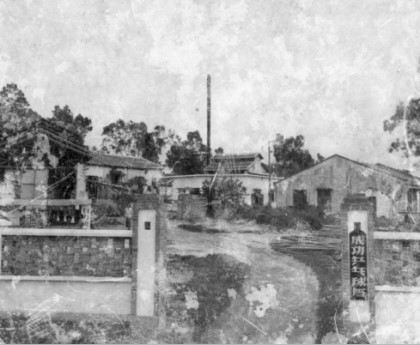
Nhà máy bóng bàn Chenggong chuyển đến Yanzigang, quận Haizhu
②Paolougang bên cạnh Đại lộ Công nghiệp Hà Nam hiện là khu Yanzigang thuộc quận Haizhu. Bắt đầu từ năm 1952, vùng ngoại ô "Hà Nam" ở Quảng Châu được xây dựng như một cơ sở công nghiệp quan trọng ở Quảng Châu. Đại lộ này từng là trung tâm của ngành công nghiệp Quảng Châu và đã khai sinh ra nhiều sản phẩm đầu tiên trong nước. Vào thời hoàng kim, Đại lộ Công nghiệp dài 5,5 km sản xuất các sản phẩm được ưa chuộng khắp cả nước như tủ lạnh Wanbao, pin Tiger Head, xe đạp Wuyang, v.v. Khu đất nơi Nhà máy Bóng bàn Chenggong chuyển đến ban đầu là một nhà máy sản xuất gốm sứ , vốn đã có cơ sở nhà xưởng cơ bản, thuận tiện cho việc mở rộng sản xuất. Với sự hỗ trợ mạnh mẽ của đơn vị cấp trên, Nhà máy Bóng bàn Chenggong đã có thể mua được đất và khởi công xây dựng, tạo nền tảng vững chắc cho sự phát triển trong tương lai.
Năm 1965, Nhà máy bóng bàn Chenggong đạt được một thành công khác khi phát triển máy cân bóng quang điện đầu tiên ở nước tôi. Sau đó, công ty liên tục sản xuất máy đo trọng tâm tự động, máy in nhãn hiệu tự động, máy cắt cạnh tự động và máy đo tự động, v.v., đồng thời đi đầu trong việc hiện thực hóa sản xuất bóng bàn bán tự động và tự động trong cùng ngành trên toàn quốc. Năm 1966, sản lượng bóng bàn vượt quá 10 triệu quả. Trong "Cách mạng Văn hóa", nó sáp nhập với một số nhà máy và sản xuất thyristor.
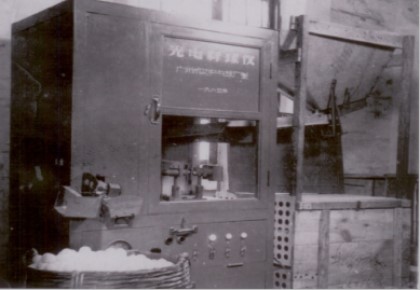
In 1965, Chenggong Table Tennis Factory pioneered my country's first photoelectric ball weighing instrument.
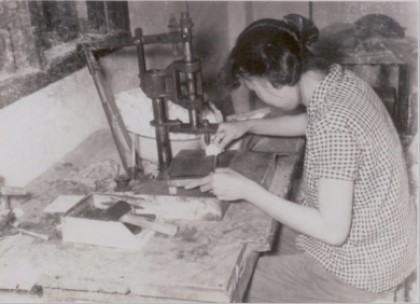
Automatic label printing machine developed by Chenggong Table Tennis Factory
In 1968, with the support and coordination of the local government, Chenggong Table Tennis Factory merged with Huada Badminton Factory③ and Zhendong Sports Goods Factory④ , significantly improving the productivity of the enterprise. Subsequently in 1969, the factory was renamed Guangzhou Sporting Goods Factory, marking the expansion of its product categories and business scope.
③According to the "Chronicles of Guangzhou City", the production of badminton in Guangzhou began in the early 1950s. With the rise of badminton, the production households continued to develop and gradually organized themselves. In 1956, the Yongjian Badminton Production Cooperative and the Yufeng Production Cooperative were formed. In 1960, the Yongjian Society was renamed the Huada Badminton Factory, with 100 employees. In 1964, the World Games brand badminton of the Yufeng Society was rated as a famous brand product in Guangzhou. During the "Cultural Revolution", all badminton production cooperatives were merged into the Chenggong Table Tennis Factory.
④Zhendong Sports Goods Factory mainly produced wooden-handled skipping ropes, table tennis nets, and volleyball nets. Before the merger, the two factories were located on the streets in the urban area, with scattered and narrow factory buildings (all old residential buildings), making material transportation and management extremely inconvenient. The merger improved the production conditions of such products. This article is compiled based on the oral narration of the retired leaders of Guangzhou Table Tennis Factory.
In 1972, the company was renamed Guangzhou Table Tennis Factory. In the same year, Guangzhou Table Tennis Factory introduced the innovative wax expansion method, replacing the old steaming process for producing close-seam balls, which doubled the work efficiency. The introduction of this technology not only improved production efficiency, but also made Guangzhou Table Tennis Factory the first company in China to achieve full mechanization of close-seam ball production.
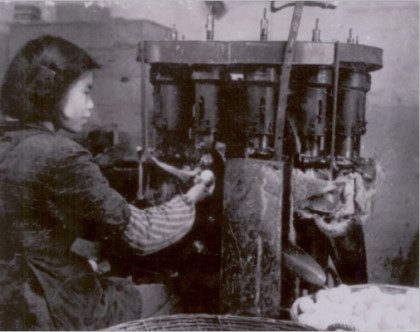
Table tennis ball expander from the mid-1970s
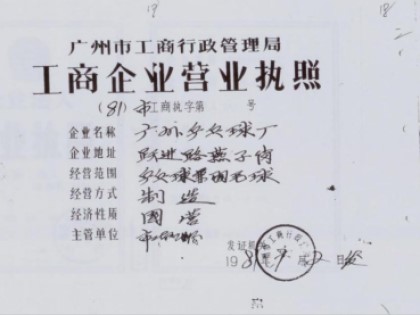
Guangzhou Table Tennis Factory Business License
In 1974, after five months of unremitting efforts and more than 130 precision tests, the Guangzhou Table Tennis Factory successfully developed China's first hard table tennis ball. This achievement marked a major breakthrough in China's table tennis manufacturing technology. The product was subsequently named "Shuangyu Brand". In 1979, this table tennis ball was officially approved by the International Table Tennis Federation and became the designated ball for international official competitions.
In 1980, "Double Fish" brand table tennis balls were officially rated as a national famous trademark and won the National Gold Award in the same year.
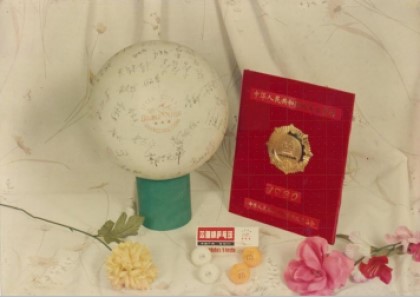
Doublefish table tennis won the national gold medal certificate
In 1981, with the booming domestic and foreign markets for badminton, the Guangzhou Table Tennis Factory restarted the production of badminton with the formal approval of the competent authorities. It focused on creating special balls for high- and mid-end competitions, strictly selected high-quality white goose feathers, and used imported cork and artificial leather as ball head materials to produce badminton with excellent whiteness, strong flight stability, and precise landing points. All products were sold to the Japanese market.
From 1986 to 1990, the annual output of badminton achieved an average high growth rate of 31%. In 1989, advanced Japanese production equipment was introduced, which greatly improved the production capacity and reached an annual production capacity of 24 million. In 1987, the Jinque brand badminton in the domestic market was rated as a high-quality product by the Ministry of Light Industry, and in 1990 it won the official certification of the national competition ball, marking the full recognition of product quality and technical level.
In 1986, as sales continued to expand, Guangzhou Table Tennis Factory set up branch factories in Zengcheng and Huaxian (now Huadu District, Guangzhou), focusing on producing mass-market table tennis balls to meet domestic market demand, while the main factory was committed to producing mid- and high-end table tennis balls for export. In 1987, total production soared to 63.02 million, of which 54.82 million were sold to overseas markets, generating US$2.18 million in foreign exchange revenue.
In 1988, the outstanding performance of Guangzhou Table Tennis Factory won the honorary titles of Provincial Advanced Enterprise and National Second-Class Enterprise. In 1990, Guangzhou Table Tennis Factory invested 2.5 million yuan in factory construction and technical transformation to further improve production capacity. In November of the same year, a new celluloid sheet plant was established in Zengcheng with an investment of nearly 2.57 million yuan. Through this series of transformation and expansion, the annual production capacity of table tennis balls doubled from 60 million to 120 million, making Guangzhou Table Tennis Factory one of the important bases for table tennis ball production in the world.
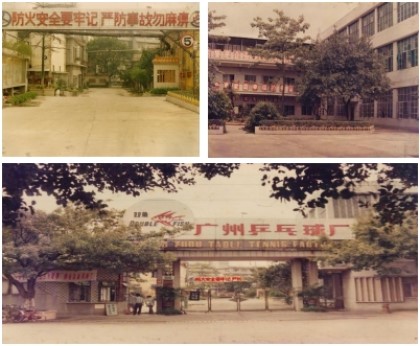
Guangzhou Table Tennis Factory in the 1990s
In 1994, the company relocated and expanded again⑤, requisitioned 50 mu of production land in Dabu Management District, Mayong Town, Dongguan City, relocated and renovated it, expanded its production scale, and achieved rapid improvement in production quality, laying a solid foundation for the company's sustainable development.
⑤ Vì thành phần chính của celluloid, nguyên liệu thô để sản xuất bóng bàn, là nitrocellulose nên vật liệu này cực kỳ dễ cháy và đã gây ra nhiều vụ tai nạn hỏa hoạn nghiêm trọng ở Trung Quốc, bao gồm cả vụ hỏa hoạn tại Nhà máy Bóng bàn Double Happiness ở Thượng Hải và Thiên Tân Nhà máy bóng bàn. Ngày 14/10/1993, Nhà máy Bóng bàn Quảng Châu cũng xảy ra hỏa hoạn khiến 4.000 mét vuông tòa nhà bị thiêu rụi. Ngoài ra, sự phát triển nhanh chóng của các khu dân cư gần Yanzigang trong những năm 1990 khiến mối nguy hiểm về an toàn trong khu vực ngày càng lộ rõ. Trước tình hình này, Nhà máy Bóng bàn Quảng Châu đã quyết định di dời hoàn toàn dây chuyền sản xuất và chuyển đến Đông Quan để đảm bảo tiêu chuẩn an toàn và hiệu quả sản xuất cao hơn.
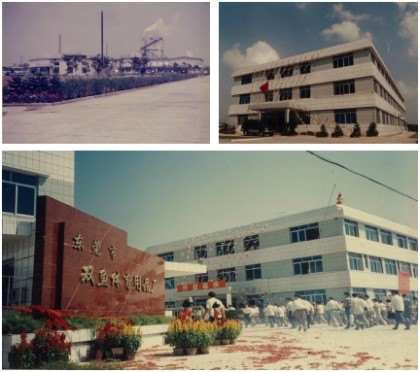
Nhà máy Đông Quản những năm 1990
Năm 1995, dựa trên sức ảnh hưởng đáng kể của thương hiệu “Doublefish” , Nhà máy bóng bàn Quảng Châu chính thức đổi tên thành Nhà máy sản xuất đồ thể thao Doublefish Quảng Châu.
Vào ngày 26 tháng 2 năm 1998, Nhà máy Hàng thể thao Shuangyu Quảng Châu được sáp nhập vào Công ty TNHH Tập đoàn Hàng thể thao Shuangyu Quảng Châu.























 国内业务:(020)8432 1360,海外业务:(020)8431 9554, 售后服务:(020)8781 7102
国内业务:(020)8432 1360,海外业务:(020)8431 9554, 售后服务:(020)8781 7102
 13829778212
13829778212